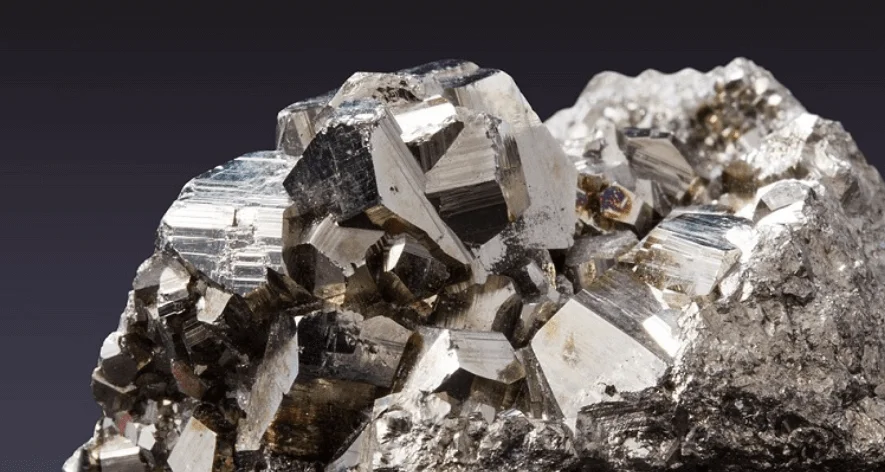Iron, a ubiquitous element found abundantly on Earth, has captivated human curiosity for centuries. From its historical significance to its vital role in various aspects of our lives, iron possesses a multitude of intriguing qualities that deserve exploration. Whether it’s the magnetic properties that make it essential for compasses or its role as a fundamental component in our bodies, iron is a fascinating element with a rich tapestry of interesting facts. We will explore some interesting facts about iron that you may not be aware of.
Interesting Facts About Iron
Here are some Interesting Facts About Iron:
1. Abundance and Composition
Iron is the fourth most abundant element in the Earth’s crust, making up about 5% of its total composition. It is found in various forms such as hematite, magnetite, and siderite. Additionally, iron is a major component of the Earth’s inner and outer core, contributing to the planet’s magnetic field.
2. Historical Significance
Iron has played a significant role in human history. Moreover, the Iron Age, which succeeded the Bronze Age, marked a major technological advancement. This breakthrough enabled civilizations to develop stronger tools, weapons, and infrastructure. Consequently, iron tools proved to be more durable and efficient, resulting in increased agricultural productivity and advancements across various industries.
3. Vital For Human Health
Iron is a vital mineral crucial for the human body’s well-being. It is a crucial component of hemoglobin, the protein in red blood cells responsible for carrying oxygen from the lungs to all parts of the body. Iron also plays a role in energy production, DNA synthesis, and proper immune function. Iron deficiency can lead to anemia, fatigue, and compromised immune function.

Image Source: Instagram @drumanaidoo
4. Magnetic Properties
Iron is well-known for its magnetic properties. Iron becomes magnetized and exhibits attraction or repulsion to other magnetic objects when exposed to a magnetic field. This property forms the foundation for creating magnets and finds application in compasses, motors, generators, and magnetic storage devices such as hard drives.
5. Industrial Applications
Due to its strength and versatility, various industries widely use iron. It plays a vital role as a primary component in the production of steel, which finds application in construction, automotive manufacturing, and machinery. Iron alloys, such as stainless steel, are resistant to corrosion, making them ideal for kitchen utensils, cutlery, and surgical instruments.
6. Iron in Art and Architecture
Throughout history, artists and architects have utilized iron in their creations. They have used wrought iron’s malleability and shaping abilities to craft intricate designs in gates, railings, and sculptures. The Eiffel Tower in Paris, one of the world’s most iconic landmarks, primarily consists of iron.
READ ALSO: Facts About Biology | Facts Of Beyond The Visible World
Interesting Facts About Iron You Need To Know
- Recycling and Sustainability: Iron is highly recyclable and can be reprocessed multiple times without losing its properties. Recycling iron and steel helps conserve natural resources and reduces energy consumption and greenhouse gas emissions. Estimates suggest that recycling one ton of steel preserves roughly 1.8 tons of raw materials and curbs carbon dioxide emissions by approximately 1.5 tons.
- Astronomical Significance: Iron has astronomical significance as well. The presence of iron in stars affects their lifespan and eventual fate. During a star’s lifecycle, fusion reactions within its core convert hydrogen to helium and subsequently produce heavier elements like iron. When massive stars explode in a supernova, they release iron and other elements into space, enriching the universe’s chemical composition.
- Iron in Geology and Landforms: Iron-rich minerals contribute to the formation of various geological features. For instance, the distinct red color of many rocks and soils is due to iron oxide. Iron also plays a role in the formation of banded iron formations, which are ancient sedimentary rocks containing alternating layers of iron-rich minerals and chert.
- Iron Meteorites: Meteorites that fall to Earth contain iron as well. These meteorites, called iron meteorites or siderites, consist mainly of iron and nickel. Collectors and scientists highly value them because they offer valuable insights into the early formation of the solar system.
- Iron Symbolism: Iron has cultural and symbolic significance in many societies. Iron, in folklore and mythology, is often linked to strength, power, and protection. People believe it repels evil spirits and supernatural beings such as vampires. Iron is also a traditional gift for the sixth wedding anniversaries, symbolizing the strength and durability of the marriage bond.
Fun Facts About Iron
- Iron as Catalysts: Iron-based catalysts have significant importance in various chemical reactions. Industrial processes utilize them in the production of ammonia, hydrogen, and methanol. Iron catalysts also play a vital role in the synthesis of pharmaceuticals, plastics, and other important chemicals.
- Iron in Earth’s Magnetic Field: The Earth’s magnetic field is believed to be generated by the movement of molten iron in the outer core. This magnetic field protects the planet from harmful solar radiation and helps maintain the stability of the atmosphere. The study of Earth’s magnetic field and its interaction with iron is a fascinating field of research known as geomagnetism.
- Iron in Sports: Iron is a crucial nutrient for athletes and individuals involved in sports. It is necessary for the production of myoglobin, a protein that carries oxygen to muscles, enabling them to function optimally. Iron deficiency can result in reduced endurance, fatigue, and impaired athletic performance.
- Iron’s Role in Rusting: One of the well-known characteristics of iron is its tendency to rust when exposed to oxygen and moisture. Rust is an iron oxide compound that forms on the surface of iron objects. While rust can be detrimental to iron structures if left untreated, it is interesting to note that rusting is a slow oxidation process that actually protects the underlying iron from further corrosion.
- Keeps Getting Better: The potential impact of this progress is enormous, enabling the construction of superior ships, cars, planes, buildings, and much more. To gauge the material’s evolution, consider this fascinating fact: If we were to build the iconic Golden Gate Bridge today using modern steel, it would weigh a staggering 40,000 tons less than its original construction. This remarkable statistic underscores the significant strides made in the iron industry and highlights the relentless pursuit of excellence and efficiency.
READ ALSO: Carbon Interesting Facts | Dive Into The Wonders Of Carbon
More Interesting Facts About Iron
- The chemical symbol for iron, Fe, derives from the Latin word “ferrum,” which signifies the metal.
- Iron is necessary, but too much is dangerous. Toxicity begins at 20mg per kg, with 60mg per kg being lethal. Anemia, a common condition, causes fatigue due to low red blood cells.
- The transition from the Bronze Age to the Iron Age was not solely due to iron’s superiority over bronze but rather its abundance and ease of use. In fact, bronze is generally harder than iron.
- Earth’s iron supply is limited, lasting around a century at current rates. However, an asteroid called 16 Psyche holds a vast iron reserve that could support our needs for an extended period.
- Currently, the majority of refined metal is iron, accounting for 90% of the total. Steel production predominantly utilizes this iron, playing a crucial role in manufacturing a wide range of items, from towering skyscrapers to everyday appliances.
- Humanity has utilized iron for over 5,000 years, as historical evidence indicates. References to this metal can be found in various passages of the Bible, particularly in the Old Testament.
- Iron is crucial for our bodies. It fuels energy, strengthens immunity, and stores oxygen in our muscles. Animal meat, spinach, and whole grains are excellent sources of iron.
- The iron content in our blood and its interaction with oxygen attribute to the red color, influencing the reflection of light.
- Plants also rely on iron for their functioning, particularly in chlorophyll, the pigment necessary for photosynthesis. Through this process, plants utilize sunlight energy to convert carbon dioxide and water into glucose.
- Iron meteorites, belonging to a class called siderites, prominently contain iron. Interestingly, ancient Egyptians crafted iron beads from these meteorites, dating back to approximately 3200 B.C.










